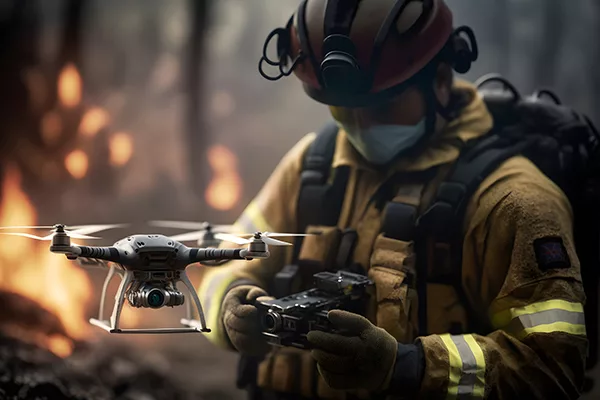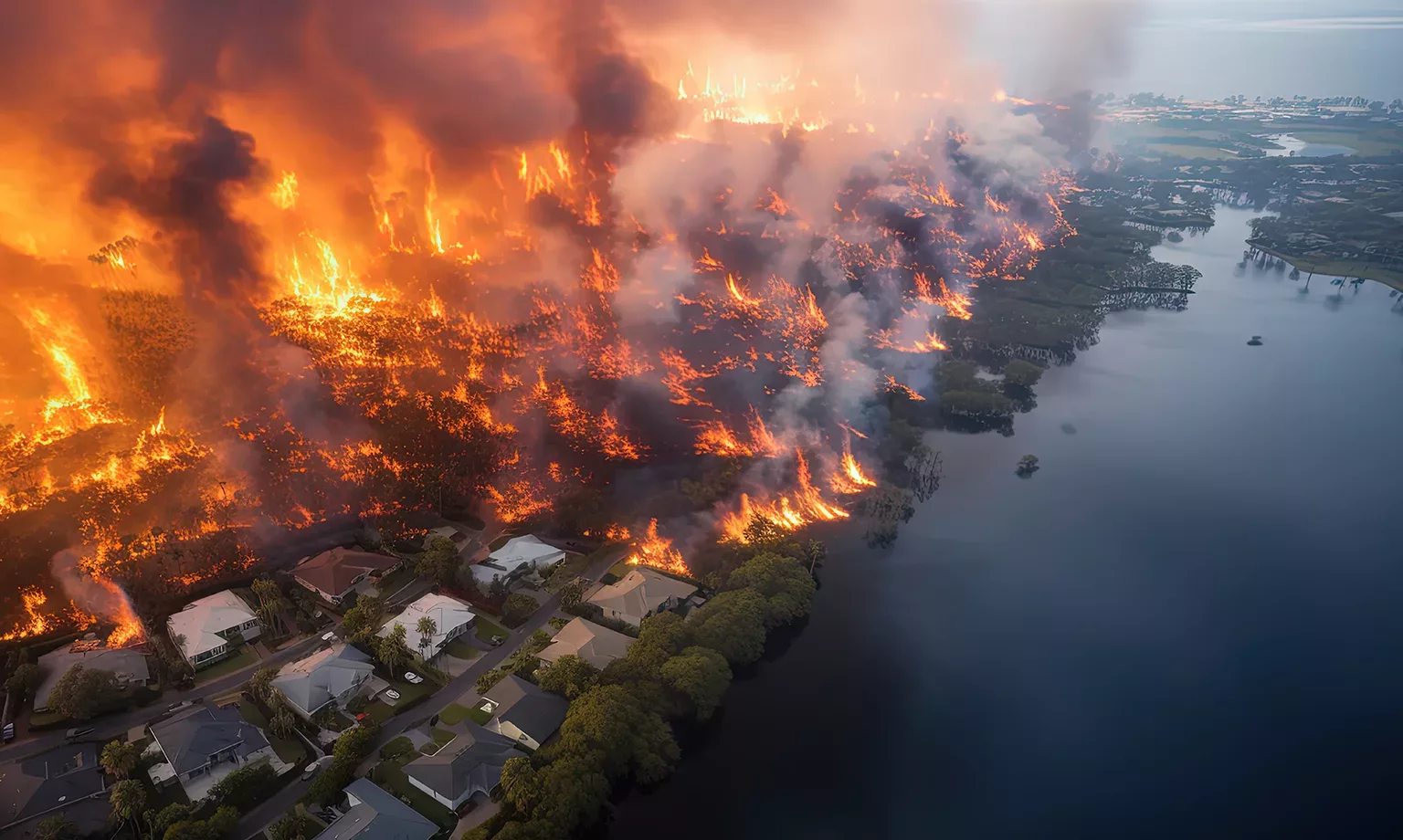The damaging effects of wildfires in the US are becoming more prominent and disruptive every year. James Conlin, Product Manager at Sharper Shape tells us how utility businesses can help reduce the risk.
HOW UTILITIES CAN MITIGATE WILDFIRE RISK
Each year, the US is subject to a fresh wave of devastating wildfires with little respite, and history has taught us hard lessons about how powerline infrastructure can spark or contribute to a blaze.
Whilst utilities take these risks very seriously, given the threat to life and property, it is imperative that they continue to find ways to improve preparedness and reduce risk. If utility companies don’t, not only are people and communities at risk, but the utilities themselves may be imperiled.
For example, shares in Hawaiian Electric Industries fell 40 percent to their lowest level in more than a decade due to the effects of recent fires.
The good news is that there are powerful artificial intelligence (AI) powered technologies that can improve asset maintenance, vegetation management, and reduce wildfire risk whilst delivering commercial benefits.
A HERCULEAN TASK
In the context of wildfires, what responsibilities do utilities have? For example, downed powerlines can become ignition sources when they come into contact with dry vegetation. This critical moment has two sides to the equation: the asset and its environment, and utilities have responsibilities to both.
Regarding the assets themselves, utilities are responsible for ensuring they are fit for purpose and well maintained. A noteworthy case is a split wooden utility pole that is more likely to fall down in high winds.
In terms of the surrounding environment, utilities spend vast resources on vegetation management, such as cutting back encroaching foliage that could pose an ignition risk if it comes into contact with the power line.
In practice, it means that utilities must dispatch teams to manually inspect its assets for signs of wear and weakness and issue a work order for a repair team to fix any problems. In parallel, if there are concerns over vegetation encroachment, an arborist team is sent out to inspect and report back with a quote to cut back to specifications.
That initial pre-inspection can cost as much as $800 per mile, in addition to the cost for the actual work order, which is a lot of work and can be expensive.
In conjunction, utility asset maps are frequently inaccurate, which can cause utilities to underestimate the number of poles it has in an area and map its locations inaccurately, sometimes up to hundreds of yards.
This isn’t surprising, with some of these assets dating back to the 1800s and paper records getting lost, so it’s easy for discrepancies of any size to creep into projects.
This introduces huge inefficiencies in inspecting and maintaining the network effectively. There are instances where work crews are dispatched to the wrong location or find a job very different to their scope of work once they arrive.
Considering that there are more than 200,000 miles of high-voltage transmission lines across the US, it is a truly herculean task to stay on top of. As such, utilities must strike a balance between responsible operations, profitability, and respect for the ratepayer.
Any tension between stakeholders evaporates when disaster strikes; shareholders and executives who would rather lower operational expenditure are not well-served by hits to the share price and regulatory fines. Ratepayers also don’t want high operational expenditure reflected in their bills, which are seldom reduced in cases of disaster – repairs must be paid for, and FEMA’s funds are running low.

MIND OVER MUSCLE
A herculean task requires herculean muscle – more inspection teams, more miles, more money, and a more intelligent approach.
This can be achieved with more accurate information, where outdated and incomplete maps of assets must be updated. This means using sensor-equipped helicopters and trucks or fixed wing aircraft to perform data collection missions, which will produce accurate and extensive 3D models of the project, including its surroundings.
But much more can be done. The virtual environment can store and manage the geo-spatial content which goes into building a Living Digital Twin (LDT), and can be analyzed by human operators backed up by AI algorithms to identify hotspots for likely asset damage or vegetation encroachment.
Rolling inspection regimes can then be more accurately targeted and enable intelligent prioritization efforts that minimize both cost and risk.
Utilities can go a step further by using an LDT; automated and piloted drones can then fly inspection missions to update the LDT data. Subsequently, trained AI and machine-learning (ML) models can identify asset and vegetation maintenance needs based on changes over time.
This means that utilities can inspect many more miles per day at a fraction of the cost and catch risks earlier whilst dispatching fewer inspection crews.
Equipped in this way, utilities can save on operating costs associated with asset and vegetation inspection and management. These savings alone will likely recoup the investment made.
Most importantly, utilities will be better capable of reducing wildfire risk caused by suboptimal asset and vegetation inspection and maintenance. This reduces the danger to life and property, and also lowers business risk over time.
Thus, when wildfires do happen, utilities will have a more accurate view of their network to plan immediate responses and repairs.
Ultimately, wildfire risk is business risk, and utilities must do whatever they can to mitigate it. Shareholders, ratepayers, and – crucially – the communities affected deserve nothing less.
































